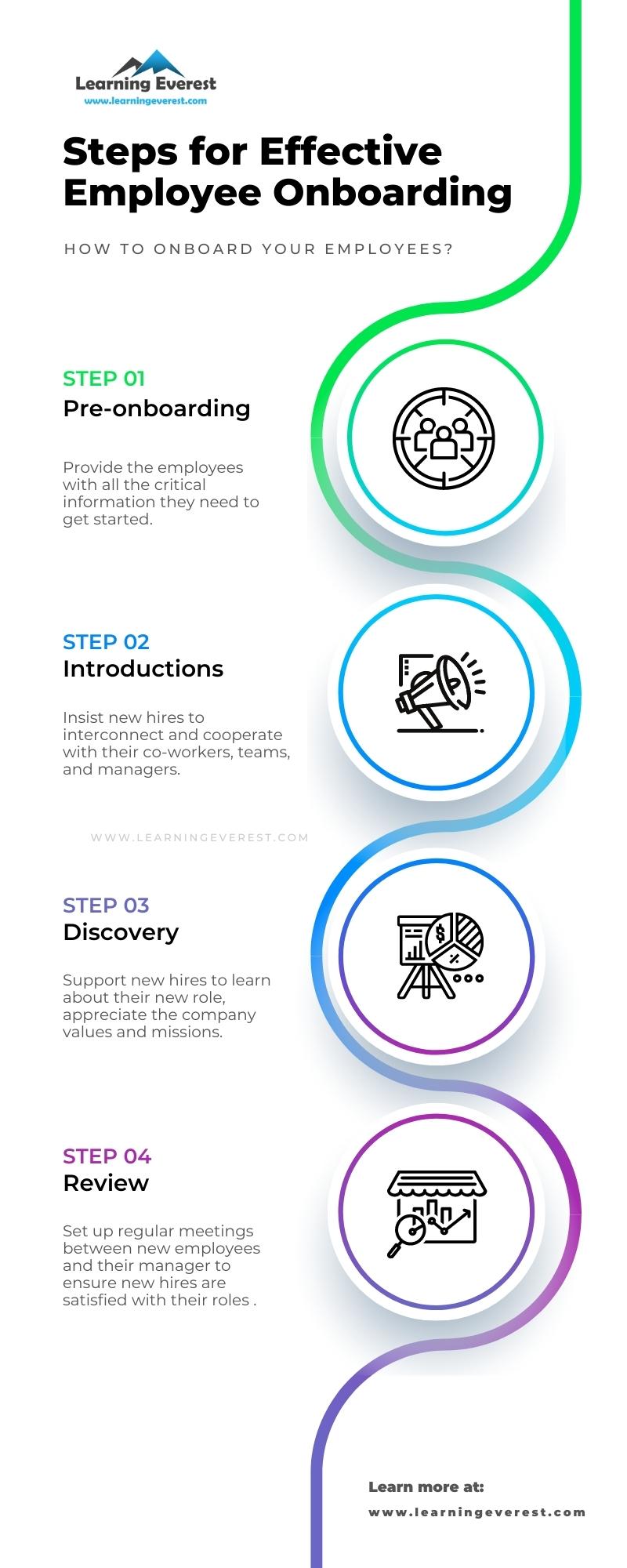Do you know that there are several phases of employee onboarding? While onboarding can vary depending on the organization or department, you can still divide it into basic stages. Hence, new employees always need to receive the attention they require at the right time. In this blog, we will discuss the phases of employee onboarding in detail.
Here are 4 Different Phases of Employee Onboarding: A Step-by-Step Guide
What are the 4 phases of employee onboarding?
Primarily, there are four phases of effective employee onboarding, each having a crucial role in aiding newcomers without disrupting their teams. Here are four phases of employee onboarding that you need to ace to help your employees succeed in their new positions:
Phase 1: Pre-boarding
The first phase of onboarding, pre-boarding, starts when an employee agrees to join the organization, usually through exchanges of signed documents via email or in person. At this stage of employee onboarding, the recruiters can warmly welcome new employees, providing them with all the critical information they need to get started in a highly organized manner. It is vital to have all the paperwork arranged during pre-boarding. Here are some of the essential documents you can set and information you can provide during pre-onboarding:
- Confirmation of start date and schedule
- Official contract of employment with the job description
- Tax forms
- Banking details
- Non-disclosure form
You can also utilize this period to provide employees access to devices, files, and folders and sort out physical workplaces for in-office employees. You can also use pre-onboarding as a chance to share information about previous achievements and team meetings. This will allow new employees to understand a little about company goals, departmental targets, and organizational culture. Employee pre-onboarding completes on the first day of the job, which takes us to phase two of onboarding.
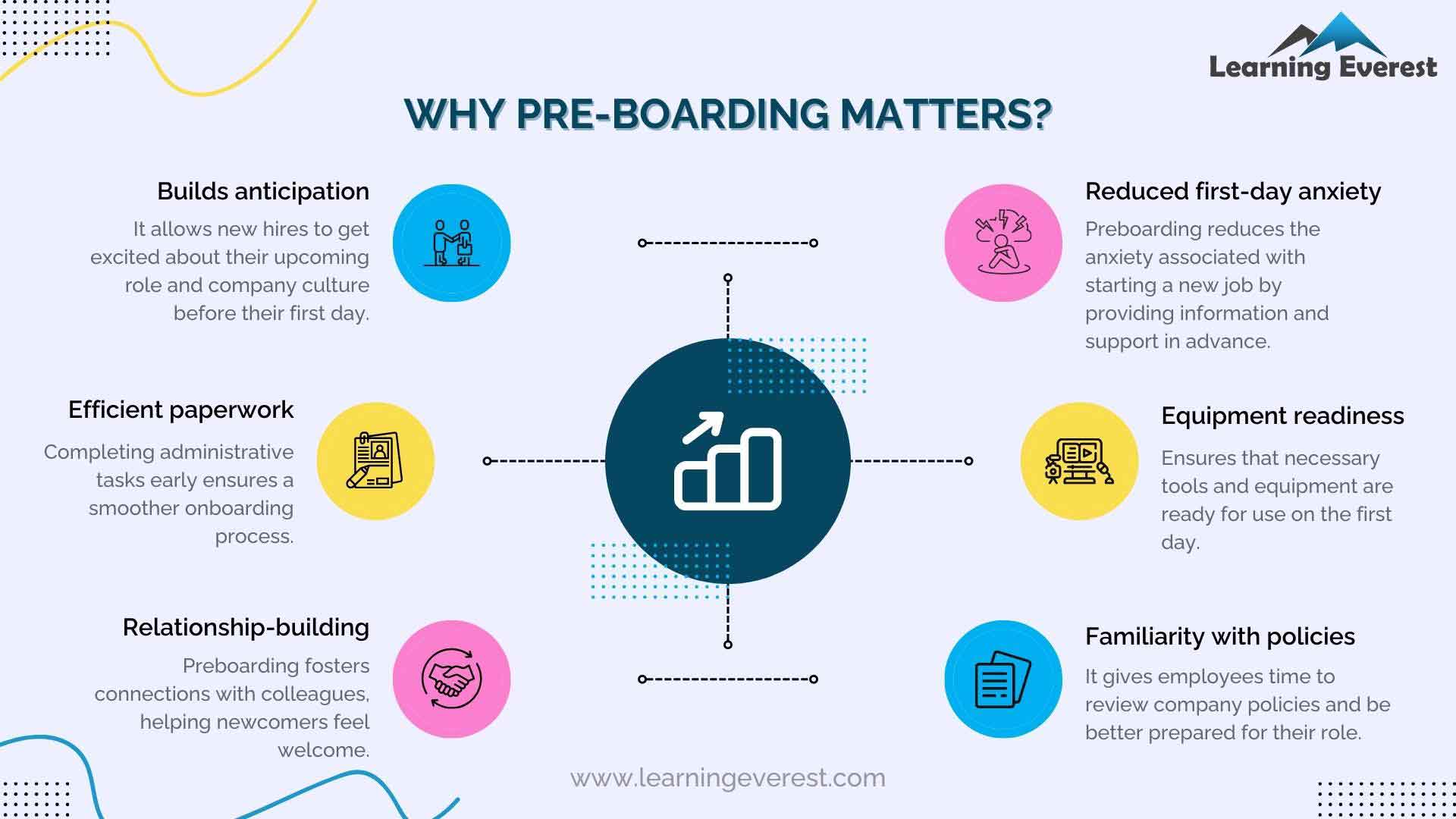
Phases of Employee Onboarding – Pre boarding
Phase 2: Introductions
The second phase of onboarding starts on the first day and persists for a minimum of a few days or a week or longer, depending on the nature of the position and the size of the organization. The second phase of employee onboarding is perhaps the most important of the four phases of employee onboarding, as it sets the tone for how new hires interconnect and cooperate with their co-workers, teams, and managers.
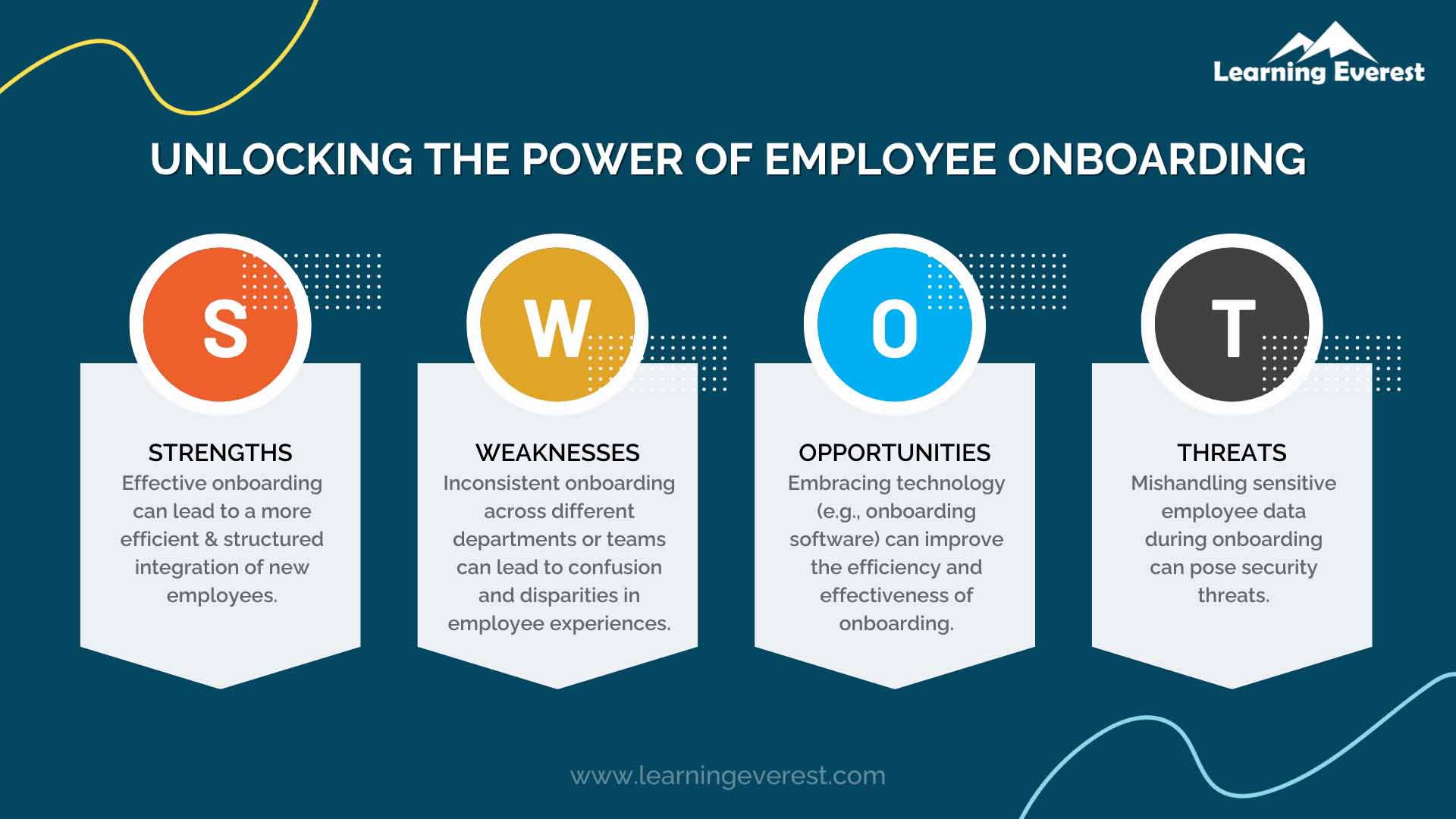
Phases of Employee Onboarding – Introductions
With a successful second phase of employee onboarding, employees will always know whom to speak to when they need help, which is crucial to building confidence and settling in. The completion of phase two depends on each different organization. Still, usually, once someone has familiarized themselves with their new routine, software, or equipment and they have had the chance to meet their new teammates and manager, they are ready to begin learning the specifics of their new role. Then we move into phase three.
Phase 3: Discovery
Knowing the job fundamentals are at the heart of phase three. During the discovery phase, the objective is to support new employees as they learn about their new role, appreciate the company values and missions they first saw in the second phase, and gain a better understanding of their responsibilities.
Naturally, the specifics of the third phase entirely depend on the position itself, but you can assign each new employee a buddy for phase three of onboarding. Set milestones new employees can achieve throughout the third phase of onboarding, which you can also acknowledge with a friendly message, a cheering announcement to the team, or even a small reward to increase the employee’s engagement effectively in their work and commitment to professional development.
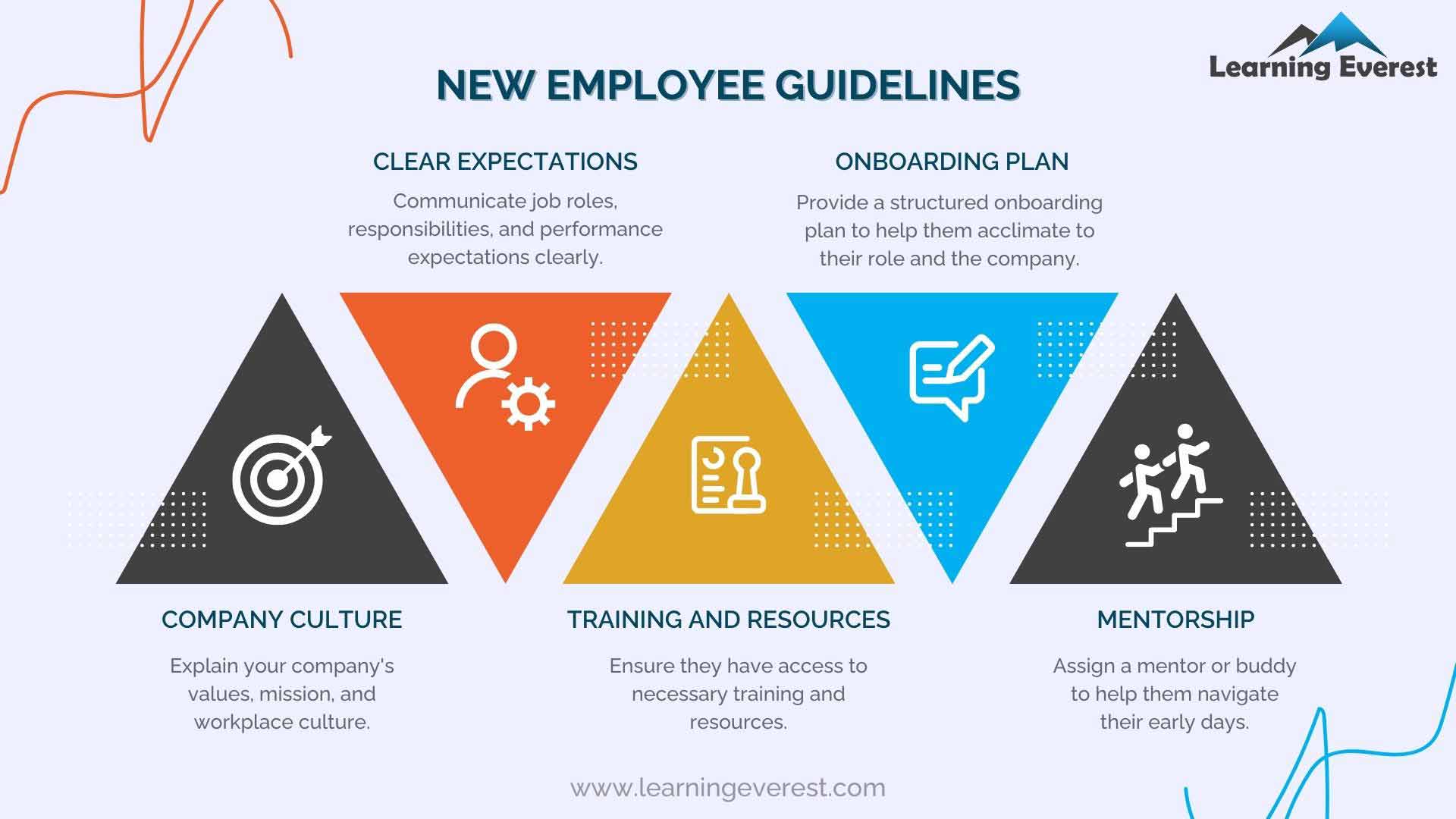
Phases of Employee Onboarding – Discovery
At the end of this phase, which may last around a month or longer, you should organize meetings for new employees with their manager or team leads, where they can exchange feedback on what was discovered, their performance, and upcoming projects and goals.
Phase 4: Review
Lastly, among the phases of employee onboarding, in this final phase of onboarding, new employees start practicing what they have discovered and successfully start working with the team. During this phase, set up regular meetings between new employees and their manager, and provide new employees with additional employee training.
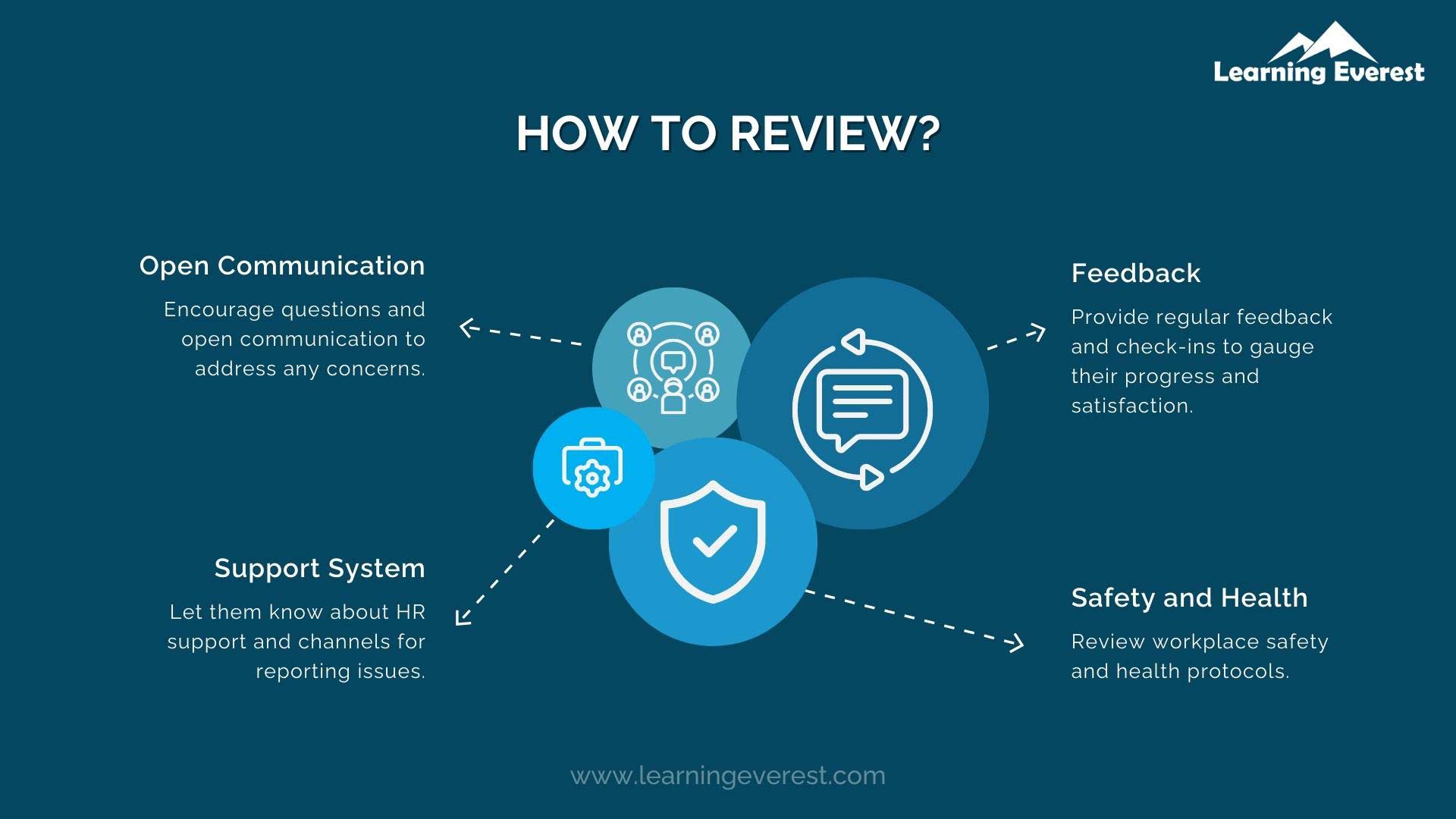
Phases of Employee Onboarding – Review
Continuing to conduct regular check-ins to ensure new employees are satisfied with their roles and the company culture can foster a better insight into how successful the onboarding process has been. A final onboarding check-in is applicable around six months into a new job. By this time, employees in most positions are fully engaged with their duties and embedded in the company culture, able to accept their responsibilities and make essential decisions autonomously.
Infographic
Knowledge Check!
Summing up
The role of integrating new employees into the organization is crucial to the future success of any organization. And that means you are directly impacting business performance, too. Therefore, be highly organized and maintain the abovementioned phases of employee onboarding so you can always determine the priorities for new employees’ development. Moreover, give new employees the support they need without ever overwhelming them.
For further details, check out our blog on the importance of an employee onboarding process!
Frequently Asked Questions (FAQs)
What are the four steps in onboarding?
There are four phases in onboarding. They are preboarding, introductions, discovery, and review.
What is preboarding?
The first phase of onboarding, pre-boarding, starts when an employee agrees to join the organization, usually through exchanges of signed documents via email or in person.
What happens in the discovery phase of the onboarding?
During the discovery phase, the objective is to support new employees as they learn about their new role, appreciate the company values and missions they first saw in the second phase, and gain a better understanding of their responsibilities.


